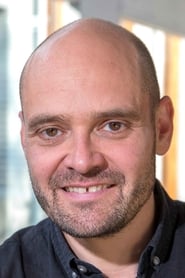Cast
View AllNikolaj Lie Kaas
as Carl Mørck
Fares Fares
as Hafez el-Assad
Pilou Asbæk
as Ditlev Pram
David Dencik
as Ulrik Dybbøl
Danica Ćurčić
as Kirsten Marie 'Kimmie' Lassen
Sarah-Sofie Boussnina
as Young Kimmie
Johanne Louise Schmidt
as Rose Knudsen
Marco Ilsø
as Young Ditlev
Beate Bille
as Thelma
Peter Christoffersen
as Alberg
Søren Pilmark
as Marcus Jacobsen
Michael Brostrup
as Børge Bak
Morten Kirkskov
as Lars Bjørn
Phillip Stilling
as Young Ulrik
Adam Ild Rohweder
as Young Bjarne
Crew
Director
- Mikkel Nørgaard
Producer
- Louise Vesth
- Jonas Bagger
- Peter Aalbæk Jensen
Reviews
Reno
> The second episode: A new case in the hands.
A follow up to 'The Keeper of Lost Causes' based on the Danish crime-thriller novel of the same name in the original language. That one was a classy, a brilliant initiation in the 'Department Q' series. One of the best Scandinavian detective movie I have ever seen. I expected same energetic, caliber and suspenseful in this as well. But marginally disappointing, yet it stood and delivered to the previous film's standard.
In this second episode, it was a murder mystery for Carl and Assad to crack it down. They did not choose it, the case did. It was a long pending affair in the department, since then the world has changed a lot. But the father of twins murdered who investigated privately leaves all the required evidence to the Department Q team. Now, where these two deeply dedicated detectives begin, how they dig it and whether they reach the other end of the investigation to uncover everything is the rest of the film.
With a new target in the hands, the Department Q world expands further bigger than the first film. Takes us to the two decades earlier and narrates some of the key events by introducing new characters. So it also creates curiosity about the happenings around and sufficient suspense where it all went wrong. The prediction was not that hard, but without a clear picture of what happened, I simply failed to make a guess as I do always. The story holds everything back, that's a weak point, but very gripping with those thrilling going after scenes.
> "I never met anyone as destructive as him."
Too much of flashbacks might be the reason for movie to lose the original appeal. It reduced Carl and Assad's screen-space. It was good for this particular plot to develop the story and characters, but did not help what Department Q theme is known for. That was not at all, certainly it was a good story, I'm not arguing with that, but the presentation was not charming enough and the dearth of fine action sequences was a little setback which was absolutely necessary in the cop themed films.
The movie was shot very well with maintaining the same tone from the first, along great performances by everyone. The difference between Carl and Assad remained, we should say it was maintained as it should be. In any two buddy cop movies, they are always antipodal characteristic. It was like a cliche, but brings the better outcome. These two guys together form a best homicide team in Copenhagen police department. Now the third character introduced in this part, a secretary who loosely hangs around, but out of the league from the perspective of story narration.
Very much a Danish's answer to the Swedish's 'Dragon Tattoo' films. But in a way the two are not a comparable, if you do, then this one lacks in a long way. Because of the type of cop works are different with completely different universe and environment. After the first two films the director has changed for the third film, which is set to hit the screen in 2016. Hoping for 'A Conspiracy of Faith' to do much better than this one, because many more to follow if that succeeds.
7½/10
Oct 24, 2015
Thematic Analysis
The Absent One represents a fascinating example of Thriller cinema, offering viewers a unique perspective on the human experience and societal structures. The film's approach to its themes demonstrates a creative vision that distinguishes it within its genre.
Director Mikkel Nørgaard brings their distinctive visual style to this film, continuing their exploration of themes seen in their previous works while adding new elements. Their approach to pacing and visual storytelling creates a viewing experience that rewards close attention.
Released in 2014, the film exists within a cultural context that continues to evolve with our understanding of its themes. Its critical acclaim reflects its artistic achievements and its place in cinema history.
Did You Know?
- The production of The Absent One took approximately 18 months from pre-production to final cut.
- With a budget of $5.8 million, the film proved to be a financial success, earning back its investment and more.
- The final cut of the film runs for 116 minutes, though the director's initial assembly was reportedly 143 minutes long.
- The cast underwent specialized training for 5 weeks before filming began.
- Some visual effects sequences took up to 10 months to complete.
- The director insisted on using practical effects whenever possible, reserving CGI for only the most necessary scenes.
Historical Context
- In 2014, when this film is released:
- Streaming services were revolutionizing film and television consumption.
- Political polarization was intensifying in many countries.
- Streaming platforms were disrupting traditional distribution models and changing how audiences consumed films.
How This Film Stands Out
While The Absent One shares thematic elements with other films in its genre, it distinguishes itself through its unique approach to storytelling, visual style, and character development.
Unlike Cut Off, which focuses more on action than character development, The Absent One offers a fresh perspective through its innovative visual language and narrative structure.
While films like Shooter and Smilla's Sense of Snow explore similar territory, The Absent One stands apart through its distinctive directorial vision and pacing.
This film's unique contribution to cinema lies in its bold artistic choices and willingness to challenge viewer expectations, making it a valuable addition to its genre.
Details
- Release Date: October 2, 2014
- Runtime: 1h 56m
- Budget: $5,800,000
- Revenue: $11,500,000
Where to Watch

























